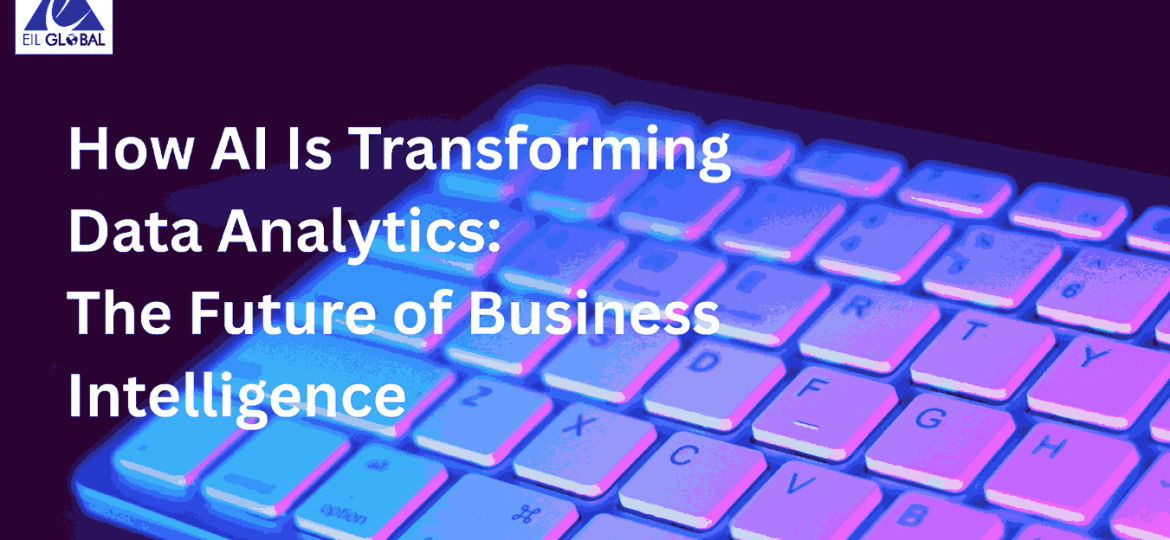
The intersection of artificial intelligence and data analytics has created one of the most significant technological revolutions of our time. As businesses generate unprecedented volumes of data every second, traditional analytical methods struggle to keep pace with the demand for faster, deeper, and more actionable insights. Enter artificial intelligence, a transformative force that is fundamentally reshaping how organizations collect, process, analyze, and derive value from their data assets. This convergence is not merely an incremental improvement but represents a paradigm shift in how we understand and leverage information for strategic advantage.
The Evolution from Traditional to AI-Powered Analytics
Data analytics has traveled a remarkable journey from simple spreadsheet calculations to sophisticated machine learning algorithms. Traditional analytics relied heavily on human expertise, predetermined rules, and historical data examination. Analysts would spend countless hours cleaning data, building queries, and creating static reports that often became outdated before they reached decision-makers. This reactive approach meant businesses were constantly looking in the rearview mirror, making decisions based on what had already happened rather than what might occur next.
The introduction of artificial intelligence has fundamentally altered this landscape. Modern AI-powered analytics platforms can process massive datasets in real-time, identify patterns invisible to human observers, and generate predictive insights that enable proactive decision-making. Machine learning algorithms continuously improve their accuracy by learning from new data, creating a self-optimizing system that becomes more valuable over time. This shift from descriptive to predictive and prescriptive analytics represents a quantum leap in organizational intelligence.
What makes this transformation particularly profound is AI’s ability to work with unstructured data. While traditional analytics primarily handled structured information in neat rows and columns, AI excels at extracting meaning from text, images, video, audio, and sensor data. Natural language processing enables systems to analyze customer reviews, social media conversations, and support tickets. Computer vision transforms visual data into actionable insights. This comprehensive approach to data utilization unlocks value that was previously inaccessible, giving organizations a more complete picture of their operations and markets.
Automated Data Processing and Preparation
One of the most significant pain points in traditional analytics has always been data preparation. Studies consistently show that data scientists spend between sixty and eighty percent of their time on data cleaning, transformation, and preparation tasks. This tedious work includes handling missing values, correcting inconsistencies, normalizing formats, and merging datasets from disparate sources. The manual nature of these processes creates bottlenecks that delay insights and consume valuable human resources.
Artificial intelligence is revolutionizing this fundamental aspect of analytics through intelligent automation. Machine learning algorithms can now automatically detect anomalies, identify and correct errors, standardize formats, and even suggest optimal data transformation strategies. These systems learn organizational preferences and business rules, applying them consistently across all data processing workflows. Advanced AI tools can recognize relationships between different data sources and automatically create integration pipelines that would have required extensive manual coding.
Furthermore, AI-powered data preparation platforms employ semantic understanding to grasp the meaning and context of data elements. They can infer data types, recognize entities like customer names or product codes, and understand relationships between different fields. This contextual awareness enables more intelligent data handling that goes beyond simple pattern matching. When combined with automated quality monitoring, these systems ensure that analytical models receive clean, reliable data without constant human intervention, dramatically accelerating the time from raw data to actionable insight.
Predictive Analytics and Forecasting Capabilities
Perhaps the most transformative aspect of AI in data analytics is its predictive power. Traditional analytics could tell you what happened and sometimes why it happened, but AI-powered systems can forecast what will happen next with remarkable accuracy. Machine learning models analyze historical patterns, seasonal variations, external factors, and complex interdependencies to generate predictions that inform strategic planning and operational decisions.
In retail, predictive analytics powered by AI forecasts demand with unprecedented precision, enabling optimal inventory management that reduces waste while preventing stockouts. Financial institutions use these capabilities to predict market movements, assess credit risk, and detect fraudulent transactions before they cause damage. Healthcare organizations forecast patient admission rates, disease outbreaks, and treatment outcomes, improving resource allocation and patient care. Manufacturing companies predict equipment failures days or weeks in advance, scheduling maintenance before costly breakdowns occur.
The sophistication of modern predictive models extends far beyond simple trend extrapolation. Deep learning networks can identify subtle patterns in high-dimensional data that would be impossible for traditional statistical methods to detect. Ensemble methods combine multiple algorithms to produce more robust predictions. Automated machine learning platforms test thousands of model variations to find the optimal approach for each specific prediction task. These advances mean that predictive analytics is no longer the exclusive domain of specialized data scientists but is becoming accessible to business users across organizations.
Real-Time Analytics and Decision Making
The velocity of modern business demands instant insights, and AI makes real-time analytics not just possible but practical at scale. Traditional batch processing approaches that analyzed data hours or days after collection are giving way to streaming analytics that process information as it arrives. AI algorithms can evaluate millions of data points per second, identifying significant events, detecting anomalies, and triggering automated responses without human intervention.
This real-time capability transforms how businesses operate across numerous domains. E-commerce platforms adjust pricing dynamically based on demand, competitor actions, and inventory levels. Digital marketing systems optimize ad spending in real-time, shifting budgets to the best-performing channels and audiences. Logistics companies reroute shipments on the fly in response to traffic, weather, or disruptions. Financial trading systems execute complex strategies in microseconds, capitalizing on fleeting market opportunities.
Beyond operational efficiency, real-time AI analytics enables unprecedented customer experiences. Recommendation engines instantly personalize content, products, and services based on current behavior and context. Chatbots provide intelligent customer support that resolves issues immediately. Fraud detection systems block suspicious transactions before they complete. These immediate interventions create competitive advantages that would be impossible with traditional delayed analysis, fundamentally changing customer expectations and business capabilities.
Natural Language Processing and Conversational Analytics
The democratization of data analytics through natural language processing represents a fundamental shift in who can access and benefit from analytical insights. Traditionally, extracting value from data required technical skills in SQL, Python, or specialized analytics tools. Business users depended on technical teams to create reports and answer questions, creating delays and limiting the questions that could be asked. AI-powered natural language processing is breaking down these barriers.
Modern conversational analytics platforms allow users to ask questions in plain English and receive immediate, accurate answers. Instead of learning complex query syntax, a sales manager can simply ask their analytics tool to show revenue trends by region for the past quarter or identify the top underperforming products. The AI interprets the intent, generates appropriate queries, analyzes the data, and presents results in accessible visualizations, all within seconds.
This natural language capability extends beyond simple queries to sophisticated analysis. Users can request explanations of why metrics changed, ask for predictive insights, and even receive proactive alerts when significant patterns emerge. The AI understands context from previous interactions, enabling conversational flows where follow-up questions build on earlier responses. Some advanced systems even generate narrative explanations of data patterns, transforming raw numbers into compelling stories that drive understanding and action across organizations.
Enhanced Data Visualization and Insight Discovery
While humans remain visual creatures who understand information best through charts and graphs, AI is transforming how we create and interact with data visualizations. Traditional business intelligence tools required users to choose chart types, configure axes, select colors, and arrange dashboard layouts. Getting visualizations right often required iteration and design expertise. AI-powered visualization engines automate these decisions, selecting optimal visual representations based on data characteristics and the insights users seek.
Beyond automating visualization creation, AI enables intelligent insight discovery that highlights the most important findings in complex datasets. Rather than forcing users to manually explore data looking for interesting patterns, augmented analytics systems automatically surface anomalies, trends, correlations, and outliers worthy of attention. These tools understand business context, prioritizing insights based on their potential impact and relevance to specific roles and objectives.
Interactive visualizations enhanced by AI allow users to explore data through natural gestures and questions, drilling down into details or expanding to broader views seamlessly. The system anticipates user needs, suggesting related analyses and alternative perspectives. Some advanced platforms employ generative AI to create entirely new visualization types optimized for specific data characteristics and analytical goals. This combination of automation and intelligence transforms data exploration from a specialized skill into an intuitive experience accessible to all business users.
Automated Machine Learning and Model Building
The emergence of automated machine learning, commonly known as AutoML, represents a democratizing force in advanced analytics. Building effective machine learning models traditionally required deep expertise in statistics, algorithm selection, feature engineering, hyperparameter tuning, and model validation. These skills took years to develop, creating a significant talent shortage that limited which organizations could deploy AI effectively.
AutoML platforms automate much of this complexity, enabling users with limited data science expertise to build sophisticated predictive models. These systems automatically preprocess data, engineer relevant features, select appropriate algorithms, optimize model parameters, and validate performance. They test thousands of potential model configurations in parallel, identifying the approach that delivers the best results for specific prediction tasks. The entire process that might have taken experienced data scientists weeks can now complete in hours or even minutes.
This automation does not replace data scientists but rather amplifies their capabilities. By handling routine model-building tasks, AutoML frees experts to focus on higher-value activities like defining business problems, interpreting results, and ensuring ethical AI deployment. For organizations without extensive data science teams, AutoML provides access to advanced analytics that would otherwise be out of reach. The technology continues evolving, incorporating more sophisticated techniques and expanding its capabilities to handle increasingly complex analytical challenges.
Improved Accuracy and Reduced Human Bias
One of the most compelling advantages of AI in data analytics is its potential to improve accuracy and consistency while reducing certain types of human bias. Human analysts, no matter how skilled, bring cognitive biases, preconceptions, and limitations to their work. Confirmation bias leads analysts to favor data that supports existing beliefs. Availability bias causes recent or memorable events to be weighted too heavily. Anchoring bias makes initial information disproportionately influential in subsequent analysis.
AI algorithms, when properly designed and trained, approach data without these cognitive limitations. They evaluate all available information consistently, identify patterns based purely on statistical relationships, and generate insights free from emotional influence or personal agenda. Machine learning models process vast amounts of data without fatigue, maintaining the same analytical rigor on the millionth record as on the first. This consistency ensures more reliable insights, especially when analyzing large, complex datasets where human capabilities are stretched thin.
However, it is crucial to recognize that AI is not inherently unbiased. Algorithms learn from historical data, and if that data reflects societal biases or unrepresentative samples, the models will perpetuate those biases. The field of responsible AI focuses on detecting and mitigating these issues through careful data curation, fairness testing, and algorithmic transparency. When implemented thoughtfully, AI-powered analytics combines the pattern recognition strengths of machines with human judgment and ethical oversight, producing insights that are both more accurate and more equitable than either could achieve alone.
Industry-Specific Transformations
The impact of AI-powered data analytics manifests differently across industries, with each sector leveraging these capabilities to address unique challenges and opportunities. In healthcare, AI analyzes medical imaging with accuracy rivaling or exceeding human radiologists, identifies potential diagnoses from patient symptoms and history, and predicts patient deterioration before clinical signs become obvious. These capabilities are improving outcomes, reducing costs, and enabling more personalized treatment approaches.
The financial services industry employs AI analytics for algorithmic trading, credit scoring, fraud detection, and regulatory compliance. Machine learning models analyze transaction patterns to identify suspicious activity in real-time, protecting both institutions and customers from financial crime. Wealth management firms use AI to create personalized investment strategies that adapt to changing market conditions and individual circumstances. Insurance companies leverage predictive analytics to price policies more accurately and streamline claims processing.
Manufacturing has embraced AI-powered analytics for predictive maintenance, quality control, supply chain optimization, and production planning. Computer vision systems inspect products with superhuman consistency, catching defects that would escape human inspectors. Digital twin technology combines IoT sensor data with AI analytics to simulate and optimize entire production lines. Energy companies use AI to forecast demand, optimize grid operations, and predict equipment failures in remote locations. Across every sector, AI is unlocking value from data in ways that were simply impossible a decade ago.
Challenges and Considerations in AI Analytics Adoption
Despite its tremendous potential, implementing AI-powered data analytics presents significant challenges that organizations must navigate carefully. Data quality remains paramount because machine learning models are only as good as the data they learn from. Poor quality data produces unreliable insights, and AI systems can amplify existing data problems rather than solving them. Organizations must invest in robust data governance, quality monitoring, and continuous improvement processes to ensure their AI initiatives succeed.
The skills gap represents another substantial barrier. While AutoML and no-code tools are making AI more accessible, effectively deploying and managing AI analytics still requires specialized expertise. Organizations need professionals who understand both the technical aspects of AI and the business context in which insights will be applied. Building or acquiring this talent requires significant investment in hiring, training, and retention strategies. Many organizations find success through hybrid approaches that combine internal development with external partnerships.
Ethical considerations and regulatory compliance add further complexity to AI analytics adoption. Questions about algorithmic transparency, data privacy, consent, and fairness require careful attention. Regulations like GDPR in Europe and various state-level privacy laws in the United States impose strict requirements on how organizations collect, process, and use data. AI systems must be designed with privacy by default, incorporating techniques like differential privacy and federated learning where appropriate. Organizations also need governance frameworks that ensure AI is used responsibly, with human oversight for high-stakes decisions.
The Future Landscape of AI-Powered Analytics
Looking ahead, the integration of AI and data analytics will only deepen and expand. Advances in quantum computing promise to unlock new possibilities for analyzing complex systems and solving optimization problems currently beyond reach. Edge analytics will bring AI processing closer to data sources, enabling real-time insights from IoT devices, vehicles, and mobile equipment without requiring constant cloud connectivity. This distributed intelligence will power autonomous systems that make sophisticated decisions independently.
Generative AI represents another frontier in analytics transformation. Large language models are already beginning to assist with data analysis by generating code, explaining results, and creating analytical narratives. Future systems may autonomously generate hypotheses, design experiments to test them, and synthesize findings into strategic recommendations. The boundary between human and machine contributions to analysis will continue to blur, creating collaborative intelligence that exceeds what either can achieve alone.
The democratization of AI analytics will accelerate, with increasingly intuitive interfaces putting advanced capabilities in the hands of every business user. Citizen data scientists equipped with AI-powered tools will complement dedicated analytics teams, distributing analytical capability throughout organizations. This democratization will drive a more data-driven culture where insights inform decisions at every level. As AI becomes embedded in all business processes, the competitive advantage will shift from having analytics capabilities to how effectively organizations translate insights into action.
Artificial intelligence is not simply improving data analytics but fundamentally transforming it into something qualitatively different and far more powerful. From automating tedious data preparation tasks to generating sophisticated predictions, from enabling natural language interactions to discovering hidden insights, AI is making analytics faster, more accurate, more accessible, and more valuable than ever before. Organizations across every industry are leveraging these capabilities to drive innovation, improve efficiency, enhance customer experiences, and gain competitive advantages.
However, realizing the full potential of AI-powered analytics requires more than just adopting new technology. It demands thoughtful strategy, robust data foundations, appropriate skills and governance, and a culture that embraces data-driven decision-making. Organizations must balance the tremendous opportunities AI presents with careful attention to quality, ethics, and practical implementation challenges. Those who successfully navigate this transformation will find themselves equipped with unprecedented capabilities to understand their businesses, anticipate change, and thrive in an increasingly complex and fast-moving world.
The revolution in data analytics powered by artificial intelligence is still in its early stages, with the most transformative applications likely yet to emerge. As AI technology continues advancing and organizations mature in their analytical capabilities, we can expect even more dramatic changes in how businesses operate and compete. The future belongs to organizations that effectively harness the power of AI-driven analytics to turn their data into genuine strategic assets, creating value that would be impossible through traditional approaches alone.
















